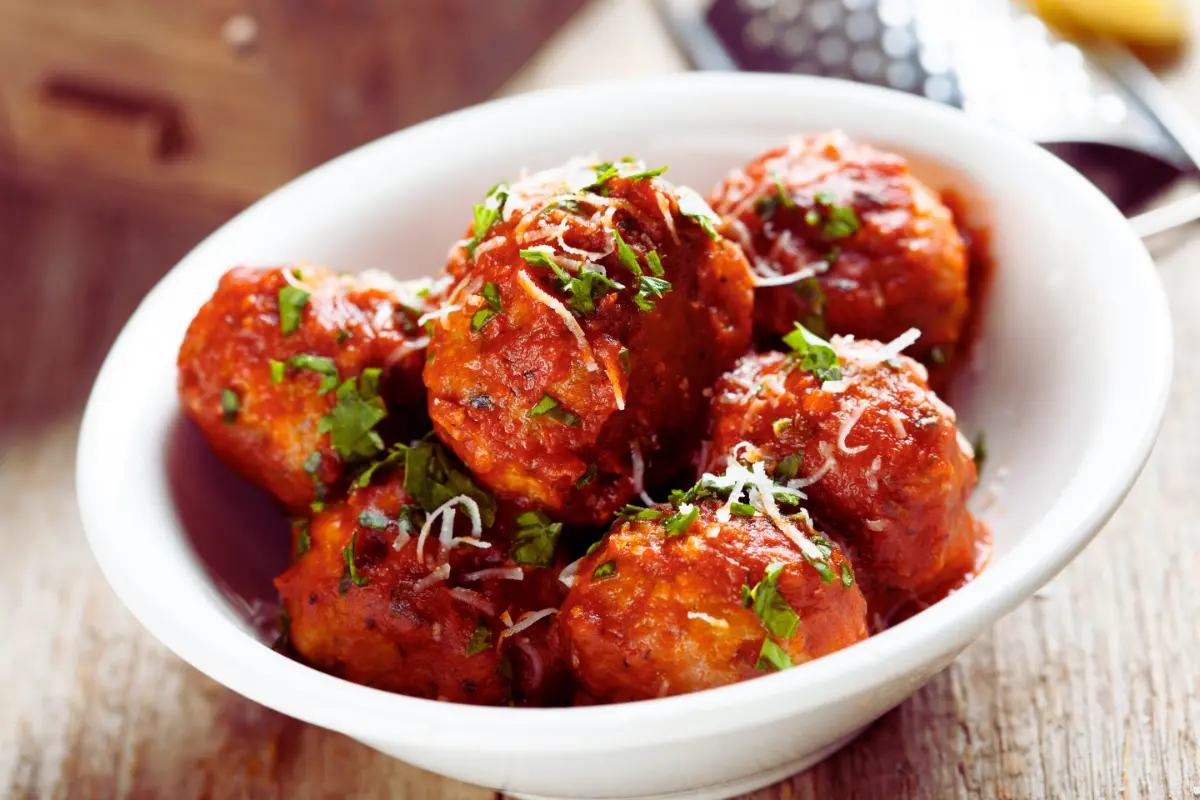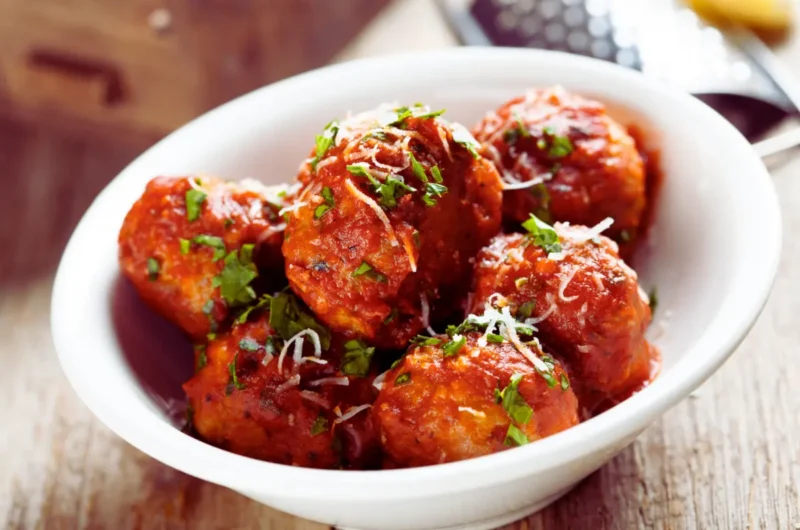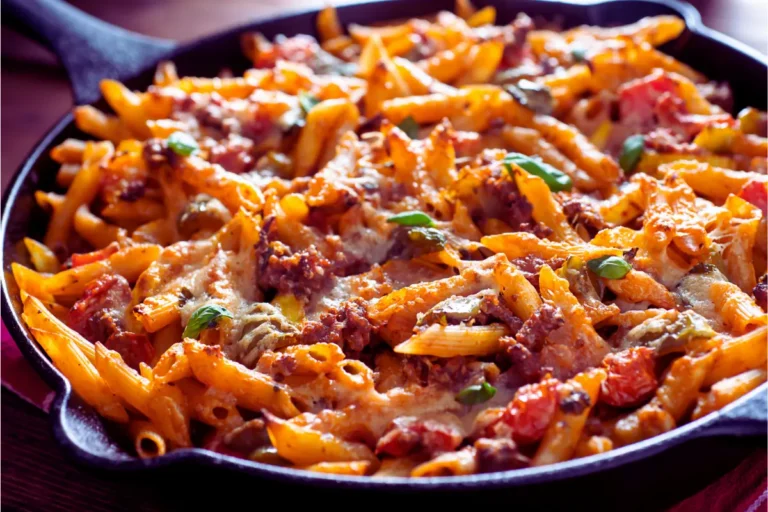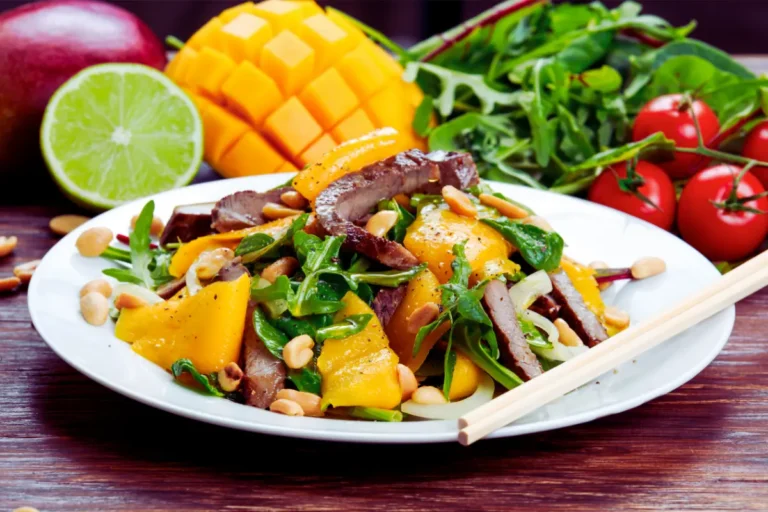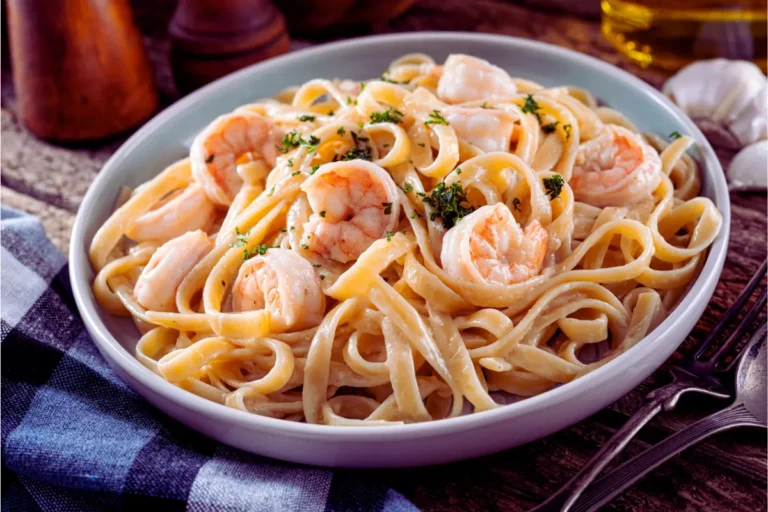Haitian Meatballs (Boulèt): A Must-Try Recipe
Hey there, foodies! Today I’m super excited to share one of my all-time favorite dishes with you – Haitian meatballs, or as they’re authentically called, Boulèt. These aren’t just any meatballs; they’re packed with vibrant Caribbean flavors that’ll transport your taste buds straight to Haiti!
I first tried these Haitian meatballs at my neighbor’s house during a potluck, and I was instantly hooked. The combination of fresh herbs, spices, and that hint of heat made me realize I needed to master this recipe myself. After several attempts (and a few learning experiences!), I think I’ve finally nailed it, and I can’t wait to share it with you!
What Are Haitian Meatballs?
So, what is Haitian boulet? Great question! Boulèt (pronounced “boo-let”) is simply the Creole word for meatballs, but trust me, there’s nothing simple about their flavor. In Haiti, these meatballs are a beloved comfort food often served at gatherings, family dinners, or even as street food.
Unlike Italian meatballs that often simmer in tomato sauce, Haitian meatballs are typically pan-fried until they develop a beautiful crust while staying juicy inside. What makes them distinctly Haitian is the seasoning blend used – a magical mixture called “epis” that forms the backbone of many Haitian dishes.
If you’re wondering how do you say meatball in Haitian Creole?, it’s “boulèt” – which is where the name of this dish comes from!
If you’re a fan of bold Caribbean flavors, you might also love these Jerk Meatballs – another flavorful twist on the classic meatball.
The Secret Of Haitian Flavors
The heart and soul of these Haitian meatballs is the seasoning. Traditional Haitian meat dishes rely heavily on a pre-made seasoning base called epis, which means “spices” in Creole. This green marinade typically contains bell peppers, onions, garlic, herbs, and sometimes a scotch bonnet pepper for heat.
When I first started making this recipe, I was amazed at how this simple herb and vegetable mixture completely transformed the flavor profile of the meat. It adds moisture, complexity, and that distinctive Haitian taste that you just can’t get from dried spices alone.
In my kitchen experiments, I’ve found that taking the time to make fresh epis makes ALL the difference in creating authentic meatballs ingredients flavors. While you can buy pre-made epis at some Caribbean markets, nothing beats homemade!
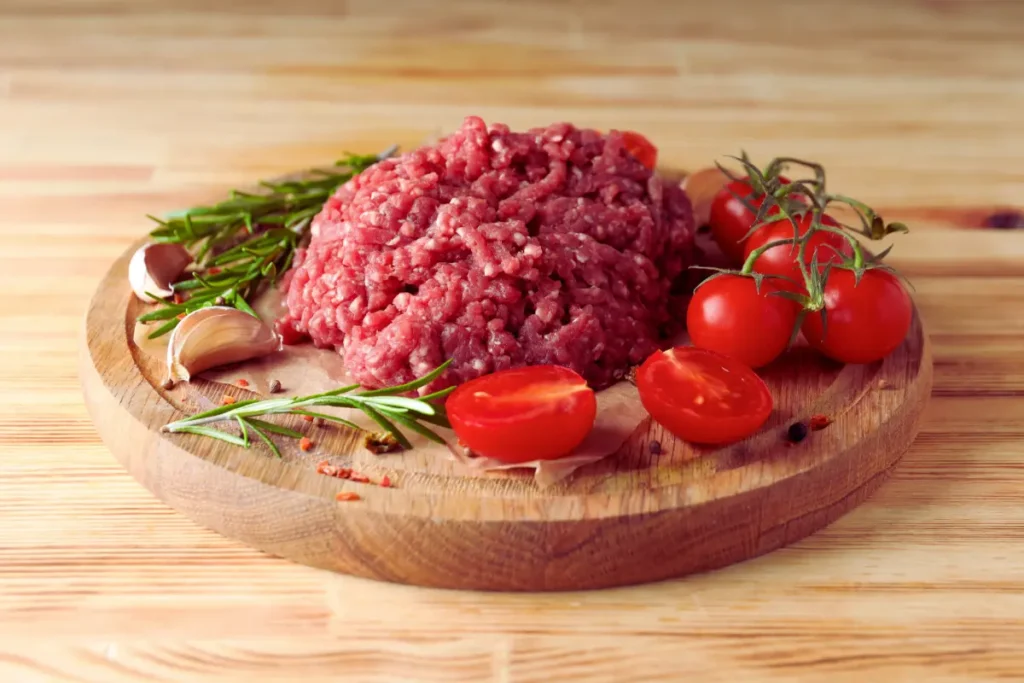
Getting Started: Prep Work
Before diving into the meatballs recipe, let me share a time-saving tip I’ve learned. I like to chop all my vegetables and herbs first thing – the onions, scallions, garlic, peppers, parsley, and thyme. This makes the whole process so much smoother!
The first time I made these, I underestimated how much chopping was involved and found myself scrambling halfway through. Now I have my mise en place ready before I even touch the meat.
If you’re short on time, you can actually prepare the epis seasoning ahead and store it in the fridge for up to a week. I’ve even frozen it in ice cube trays when I had an abundance of fresh herbs! This makes whipping up Haitian meatballs on a weeknight totally doable.
Creating The Perfect Meatball Mixture
What is boulette made of? The base is typically ground beef, although many Haitian families use a mix of beef and pork for extra flavor. The meat gets mixed with the finely chopped vegetables, herbs, and seasonings until everything is well incorporated.
I learned (the hard way!) that overmixing can make your meatballs tough, while undermixing means you’ll get bites of pure onion or pepper. I find that using my hands works best – yes, it’s messy, but it gives you perfect control over the mixing without overworking the meat.
A tip from my Haitian friend: adding a bit of breadcrumbs and egg helps bind everything together so your meatballs don’t fall apart during cooking. The first time I skipped this step, I ended up with meat crumbles instead of balls!
Looking to explore beef in other cuisines? Try these Beef Udon Noodles, a comforting bowl full of savory, umami-packed goodness.

Cooking Your Haitian Meatballs
When it comes to cooking these beauties, my preferred method is pan-frying. The direct heat creates a wonderful crust that seals in all those magnificent juices and flavors.
I usually use a cast-iron skillet with just enough oil to coat the bottom. Working in batches is key – overcrowding the pan drops the temperature too much, and you won’t get that perfect sear. I like to turn them frequently with tongs for even browning on all sides.
Some families make these meatballs with sauce right in the pan after frying, creating a delicious gravy-like topping. Others serve them as is with a squeeze of lime. Both ways are absolutely delicious!
Serving Suggestions
One of my favorite ways to enjoy Haitian meatballs is with rice – the perfect vehicle for soaking up all those amazing flavors! Haitian meatballs with rice is actually a classic pairing, typically served with a side of fried plantains or avocado slices.
For a heartier meal, I’ve tried making Haitian meatballs with potatoes – either adding cubed potatoes to simmer alongside the meatballs if making them in sauce, or serving with crispy fried potatoes on the side. The starchy potatoes are perfect for balancing the rich, spicy flavors of the meatballs.
When I have guests over, I sometimes serve these as appetizers with toothpicks and a dipping sauce. They’re always the first thing to disappear from the table!
Cultural Notes And Fun Facts
Did you know that meatballs appear in cuisines all around the world? It’s fascinating how different cultures develop similar dishes with their own unique twists. In Haiti, boulèt represents the beautiful fusion of African, French, and Caribbean influences that characterizes Haitian cuisine.
While researching this recipe, I came across people asking “Is Meatball from Baddies Haitian?” – referring to a reality TV personality! While that’s a completely different topic, it shows how food names can take on different meanings in pop culture!
Tips For Success
Through my many attempts at perfecting this recipe, I’ve learned a few tricks:
- Don’t skip the resting time after mixing your meat. Even 30 minutes in the refrigerator helps the flavors meld and makes the mixture easier to form into balls.
- Keep a small bowl of water nearby when forming your meatballs. Slightly wet hands prevent the mixture from sticking to your fingers.
- Test a small piece of the mixture by frying it before forming all your meatballs. This way, you can adjust the seasonings if needed.
- If your meatballs are browning too quickly on the outside but still raw inside, lower the heat and cover the pan for a few minutes to help them cook through.
Variations To Try
Once you’ve mastered the basic meatballs recipe, you might want to experiment with these variations:
- Try substituting ground chicken or turkey for the beef for a lighter version.
- Adjust the heat level by changing the amount of scotch bonnet pepper.
- Some regions of Haiti add a touch of cloves or nutmeg for warmth.
- If you’re serving these to kids, you might want to make them smaller – perfect little bites that are more approachable for little ones.
Conclusion
Making Haitian meatballs has become one of my favorite ways to explore Caribbean cuisine from my own kitchen. There’s something so satisfying about creating these flavorful little morsels that have been enjoyed by generations of Haitian families.
I hope you give this recipe a try and experience the wonderful blend of herbs, spices, and heat that makes Haitian food so special. Don’t be intimidated by the ingredient list – the process is straightforward, and the results are absolutely worth it!
Have you tried making Haitian meatballs before? I’d love to hear about your experience in the comments below!
Haitian Meatballs (Boulèt): A Must-Try Recipe
Course: Main DishCuisine: Haitian, Caribbean4
servings20
minutes15
minutes320
kcal35
minutesAuthentic Haitian Meatballs (Boulèt) packed with fresh herbs, aromatic spices, and a hint of heat. These flavorful morsels feature a perfectly crispy exterior with a juicy interior for an irresistible taste of Caribbean comfort food.
Ingredients
1 pound ground beef (or mixture of beef and pork)
1 medium onion, finely chopped
2 scallions, finely chopped
4 cloves garlic, minced
1 bell pepper, finely diced
1 Scotch bonnet pepper, seeded and minced (adjust to taste)
2 tablespoons fresh parsley, chopped
1 tablespoon fresh thyme leaves
2 tablespoons epis seasoning
1 tablespoon tomato paste
1 tablespoon Worcestershire sauce
1 bouillon cube, crushed
1 teaspoon ground black pepper
1/2 teaspoon salt (or to taste)
1/4 cup breadcrumbs
1 egg, beaten
3 tablespoons vegetable oil for frying
1 lime, cut into wedges (for serving)
Directions
- In a large bowl, combine ground meat, onions, scallions, garlic, bell pepper, Scotch bonnet, parsley, and thyme.
- Add epis seasoning, tomato paste, Worcestershire sauce, bouillon, black pepper, and salt. Mix thoroughly with your hands.
- Fold in breadcrumbs and beaten egg until well incorporated.
- Cover the mixture and refrigerate for at least 30 minutes to allow flavors to meld.
- Form the mixture into golf ball-sized meatballs.
- In a large skillet, heat the oil over medium-high heat.
- Fry meatballs in batches, turning occasionally until browned on all sides and cooked through (about 8-10 minutes).
- To drain extra oil, move to a plate lined with paper towels.
- Serve hot with lime wedges and your choice of sauce or accompaniments.

